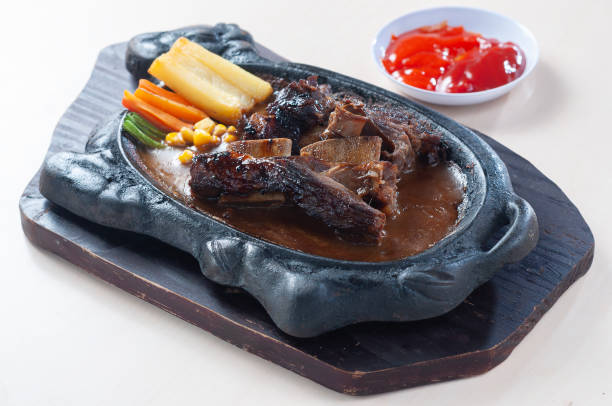The culinary world in Singapore is brimming with talented chefs and unique dining concepts. Among them stands John Tamahawk, a passionate chef and entrepreneur who has made a significant mark in the halal tomahawk steakhouse scene. With his expertise and dedication to halal dining, John has transformed the way Singaporeans experience premium halal tomahawk steaks. His restaurant, Tomahawk Contemporary Steakhouse, offers a unique blend of traditional steakhouse culture with modern halal dining options.

Who is John Tamahawk?
John Tamahawk is more than just a name in the culinary industry. He is a self-made chef known for his innovative approach to crafting premium steaks, specifically the iconic tomahawk cut. Unlike many chefs, John didn’t start his career with formal culinary training. Instead, he learned through hands-on experience, starting with food stalls and farmer’s markets before eventually establishing his own steakhouse. His journey is a testament to perseverance and passion, especially in offering halal-certified steaks to a diverse audience.
John’s mission is clear: to make premium halal tomahawk steaks accessible to everyone. He believes that high-quality dining experiences should be inclusive, catering to the growing demand for halal-certified options in Singapore’s food scene.
What Makes the Halal Tomahawk Special?
The tomahawk steak is a showstopper on any dining table. But what makes John Tamahawk’s halal tomahawk stand out? Here are some key features:
- Halal Certification: John ensures that all steaks served at his restaurant are fully halal-certified, providing peace of mind to Muslim diners.
- Premium Quality Beef: The tomahawk steaks are made from premium Wagyu beef, known for its rich marbling and tender texture.
- Unique Preparation Methods: John uses meticulous techniques such as in-house curing, brining, and aging to enhance the flavour and tenderness of the steaks.
- Live Carving Rituals: At Tomahawk Contemporary Steakhouse, diners can enjoy live carving sessions, making the dining experience both interactive and memorable.
Tomahawk Contemporary Steakhouse: A Halal Dining Experience Like No Other
Located in Novena and Raffles Place, Tomahawk Contemporary Steakhouse offers more than just steaks. The restaurant focuses on delivering a complete dining experience that celebrates both tradition and innovation. With its modern interiors and unique rituals, it has become a must-visit spot for steak enthusiasts in Singapore.
Some unique rituals you can expect at the restaurant include:
- HyperDecanting: A wine aeration process that enhances the flavours of wines served at the steakhouse.
- Port Tongs: A traditional method of opening wine bottles using heated tongs.
- Handmade Carving Knives: John personally crafts the knives used during live carving sessions, adding a personal touch to the experience.
Why Choose John Tamahawk for Halal Steaks?
If you’re looking for the best halal tomahawk in Singapore, here’s why you should consider visiting Tomahawk Contemporary Steakhouse:
- Inclusive Dining: The restaurant is dedicated to providing a halal dining experience without compromising on quality or flavour.
- Top-Notch Customer Service: Guests often praise the attentive and knowledgeable staff, who ensure that every diner feels welcome and well-served.
- Premium Ingredients: The use of high-quality Wagyu beef and other premium ingredients ensures a top-tier dining experience.
- Dog-Friendly Dining: The Novena outlet allows pet lovers to bring their furry friends along, creating a more inclusive dining atmosphere.
The Growing Popularity of Halal Tomahawk in Singapore
Singapore’s dining scene is evolving, with more restaurants recognising the need for halal-certified options. John Tamahawk has played a pivotal role in this shift by introducing halal tomahawk steaks that cater to Muslim diners without compromising on quality and flavour.
His efforts have not gone unnoticed. Tomahawk Contemporary Steakhouse has gained popularity for its unique concept and commitment to halal dining. The restaurant attracts a diverse clientele, including families, business professionals, and steak enthusiasts from all walks of life.
Conclusion
John Tamahawk is a name synonymous with innovation and inclusivity in Singapore’s steakhouse scene. His dedication to crafting premium halal tomahawk steaks has redefined the dining experience for many. Whether you’re a steak aficionado or someone seeking a unique halal dining experience, Tomahawk Contemporary Steakhouse is a must-visit destination.
Experience the best of halal tomahawk in Singapore by booking your table at Tomahawk Contemporary Steakhouse today. Indulge in a memorable dining experience that combines tradition, quality, and innovation—all while staying true to halal standards.


